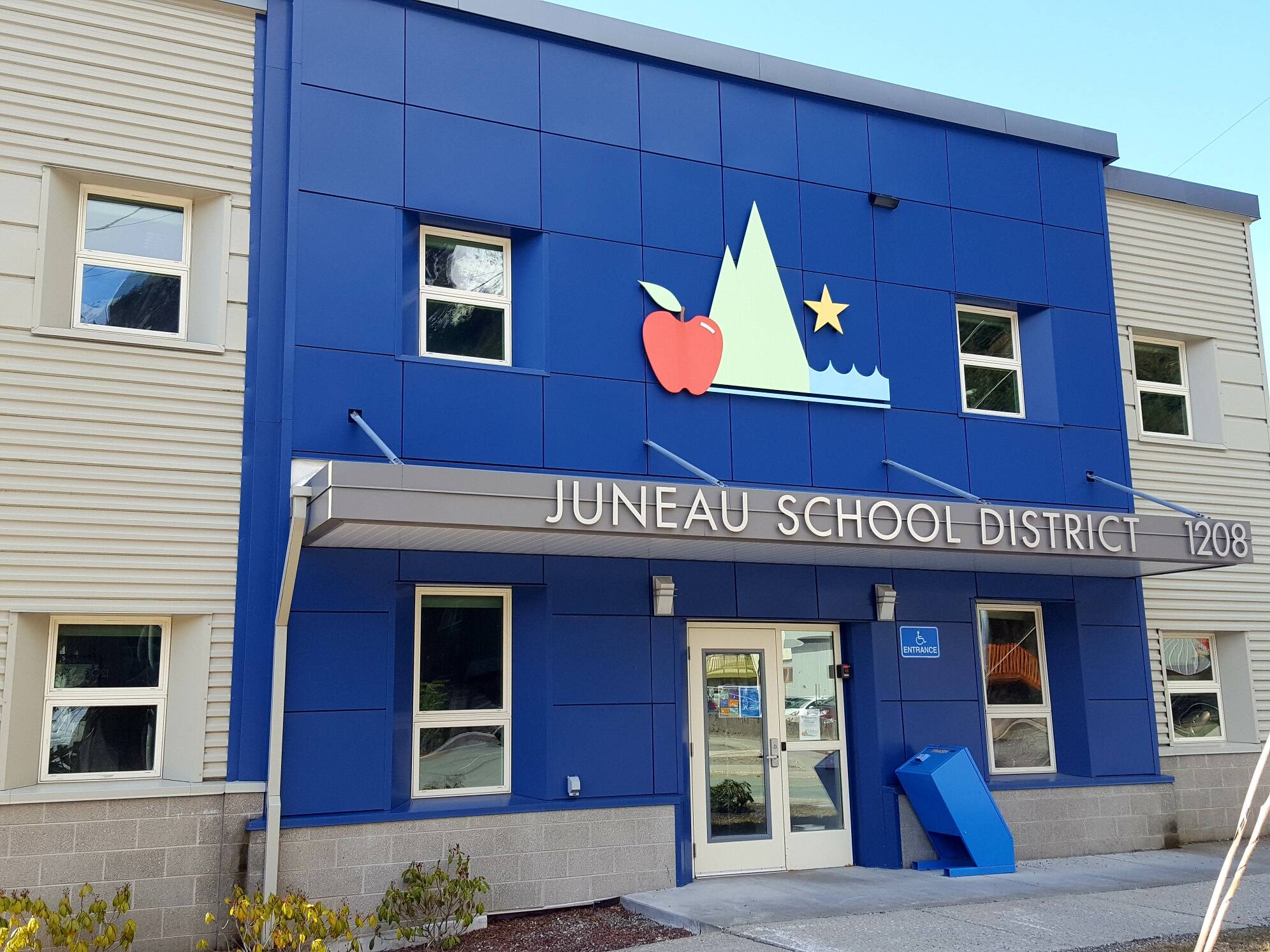Last week’s Juneau School District (JSD) Board of Education meeting, expected to be perfunctory, was far from routine.
The Thursday, March 7 special meeting was called for the first reading of the adoption of the FY 2025 budget. The budget had been hammered out after months of many long (sometimes contentious) meetings needed to reach consensus on how to deal with the potentially crushing structural deficit facing the district.
The final budget incorporated a plan to close three schools and consolidate grades 9-12 at Juneau-Douglas High School: Yadaa.at Kalé (JDHS), consolidate grades 7-8 at Thunder Mountain High School (THMS), and move grade 6 back to neighborhood elementary schools. The plan was approved by the Board by a 5-2 vote on Feb. 23, but merging the two high schools had been seriously considered since January.
Despite that, dissident board members, led by board member Amber Frommhertz, supported a motion to consider an amendment to that plan at their next regularly scheduled meeting on Tuesday, March 12. The amendment (which eventually passed 4-3 with Sorenson, Mackey and Siddon dissenting) did not provide details or state its purpose, but it later became apparent that it was laying the groundwork for consideration of a grade 7-12 plan that would keep both high schools open by adding middle school grades into JDHS and TMHS.
Frommhertz and board members supporting her motion claimed a lack of transparency in the board process and “additional information” needed to be considered before budget final approval. However, they were either unwilling or unable to present that information during the meeting.
Their contention that the public process was flawed is belied by the facts. JSD held fifteen public meetings on the budget since Jan. 9. Input was solicited through multiple community and staff engagement meetings. Almost 600 responses were received to the JSD Budget Survey. JSD launched a public budget newsletter supplementing public announcements on the district web page and social media. Superintendent Hauser was available at all public meetings to answer questions.
What no one could explain is how, in the few days remaining before Tuesday’s meeting, a fully researched budget with reliable numbers can be produced for new configuration models when it took weeks to flesh out the details and fiscal impacts of the currently approved model.
Ironically, Frommhertz admitted during the meeting that she hadn’t had time to review all the information presented for the current model and was having problems following it. Yet, she apparently has no difficulty presenting a brand-new budget for two different models to board members on Tuesday with even less time to review it or consider it for approval.
This new plan, if adopted, would completely reverse the reorganization model presented to the CBJ Assembly. This is not insignificant as the board must provide a balanced budget by March 15 to leave enough time to meet state statutory deadlines.
Timelines aside, under a 7-12 model, high school and middle school students would be forced to compete for gym and library time, and seats in the lunchroom.
Besides the problematic logistical and social issues created by sending this year’s 6th and 7th graders to a school populated by 18-year-old seniors, the 7-12 plan will exacerbate a glaring problem that previous school boards have neglected to formally acknowledge.
Dilution of core course offerings and electives has plagued both high schools for years, but has been ignored until now. Scores of students are required to take correspondence courses or summer school to graduate because classes are full or not offered. By combining our two high schools their teachers would be under one roof. This means more core class availability and more Advanced Placement (AP) and Career & Technology Education (CTE) electives.
Changing to an unvetted dual high school configuration that houses as many as six different grades in each building with only days to evaluate the financial, educational, and social consequences is foolhardy.
Protecting one high school at the expense of Juneau’s middle school students is not the way forward.
The Juneau School Board can get back on track by adopting the currently approved budget plan, a plan that has been scrutinized thoroughly with input from all stakeholders through a deliberate process.
• After retiring as the senior vice president in charge of business banking for KeyBank in Alaska, Win Gruening became a regular Opinion Page columnist for the Juneau Empire. He was born and raised in Juneau and graduated from the U.S. Air Force Academy in 1970. He is involved in various local and statewide organizations. Columns, My Turns and Letters to the Editor represent the view of the author, not the view of the Juneau Empire. Have something to say? Here’s how to submit a My Turn or letter.

